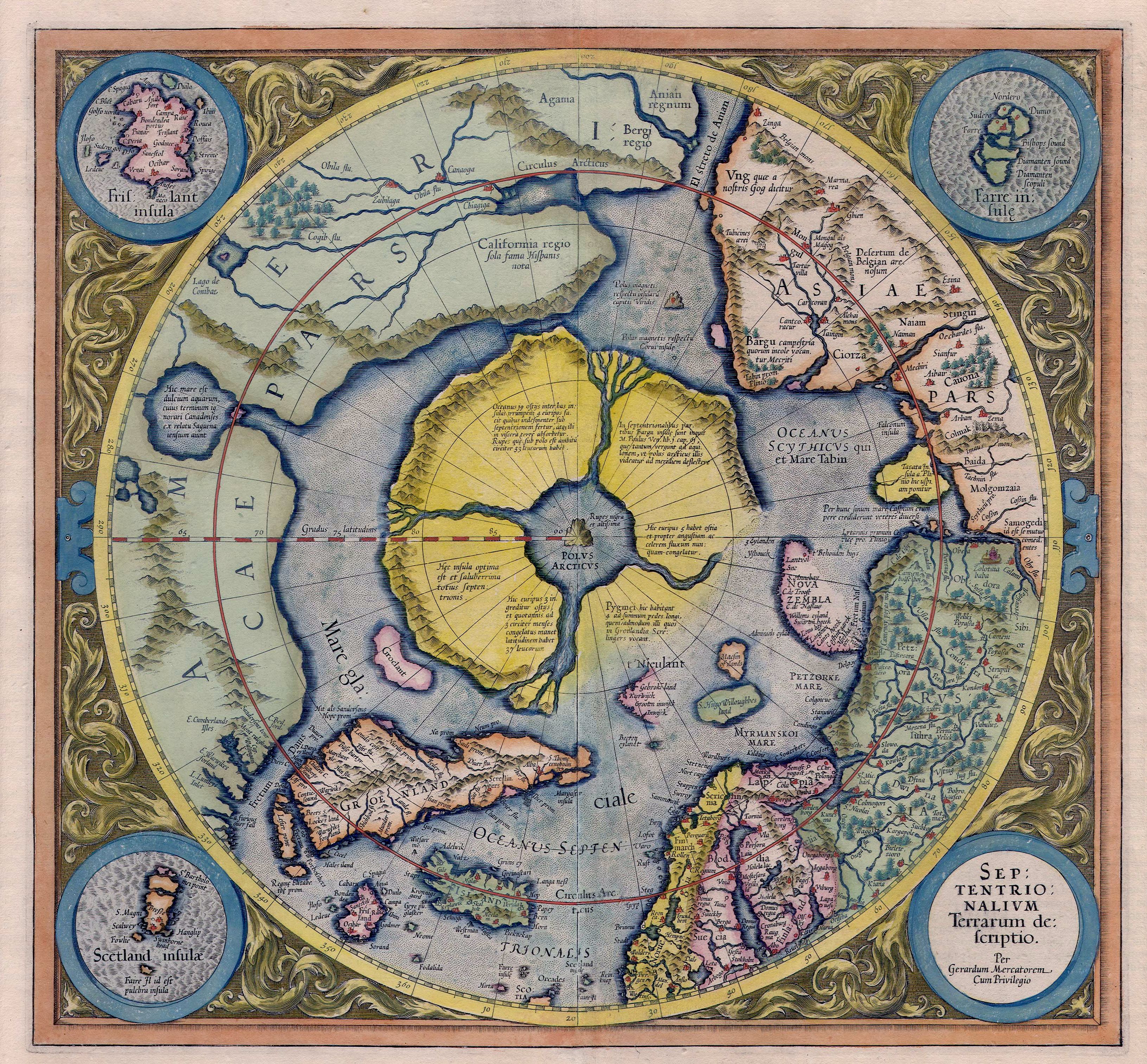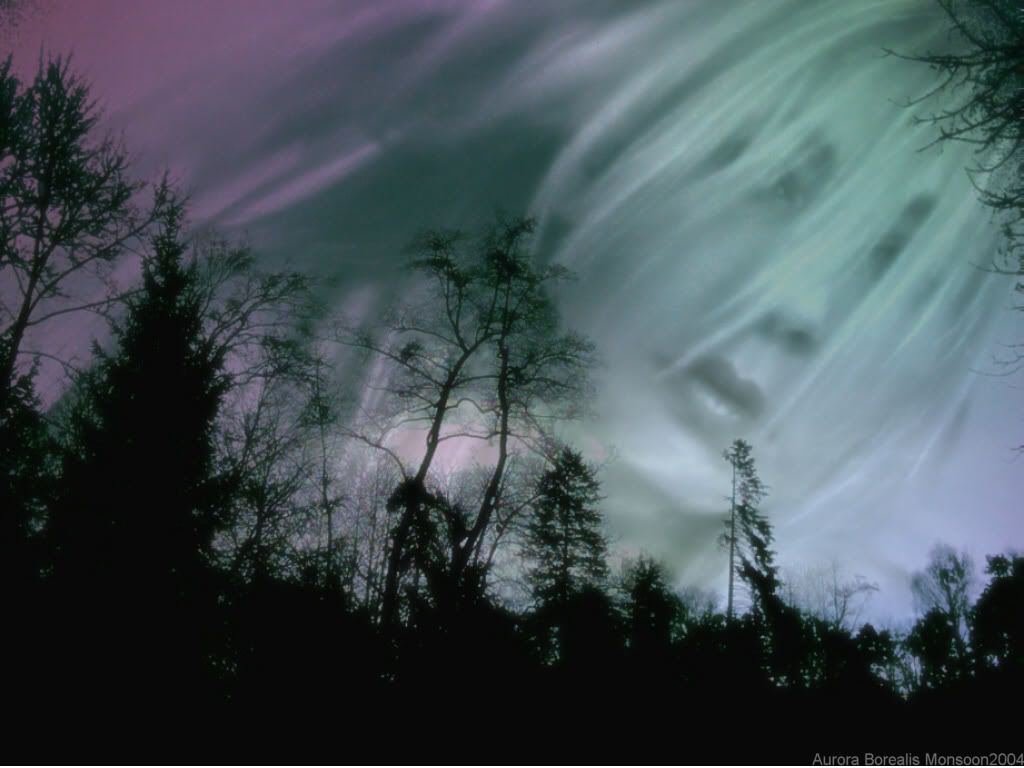'Pathfinder' (2007 film) [Wikipedia]
'Pathfinder' (also known by the alternate title 'Pathfinder: The Legend of the Ghost Warrior') is a 2007 American epic action film directed by Marcus Nispel, distributed by 20th Century Fox, and stars Karl Urban, Clancy Brown, Ralf Möller, Moon Bloodgood, Russell Means, Jay Tavare, and Nathaniel Arcand. It is a loose remake of an Oscar-nominated 1987 Norwegian movie of the same name although the geographic setting and peoples involved are very different.
Pathfinder takes place in "Vinland" (the Eastern Seaboard of Pre-Columbian North America) and the story involves a fictional conflict between the Native Americans and Viking marauders from across the Atlantic Ocean, who have come to the Americas in search of colonization.
Pathfinder received a widely negative critical reception upon release and was not successful at the box office, although the film did enjoy much better home video sales whereby the studio recouped its costs and developed a small cult status. It was also adapted into a graphic novel by Dark Horse Comics.
As the film began, the following text appeared:
600 years before Columbus,
North America was invaded by
ruthless marauders intent on
settling its shores.
Something stopped them.
What follows is the legend.
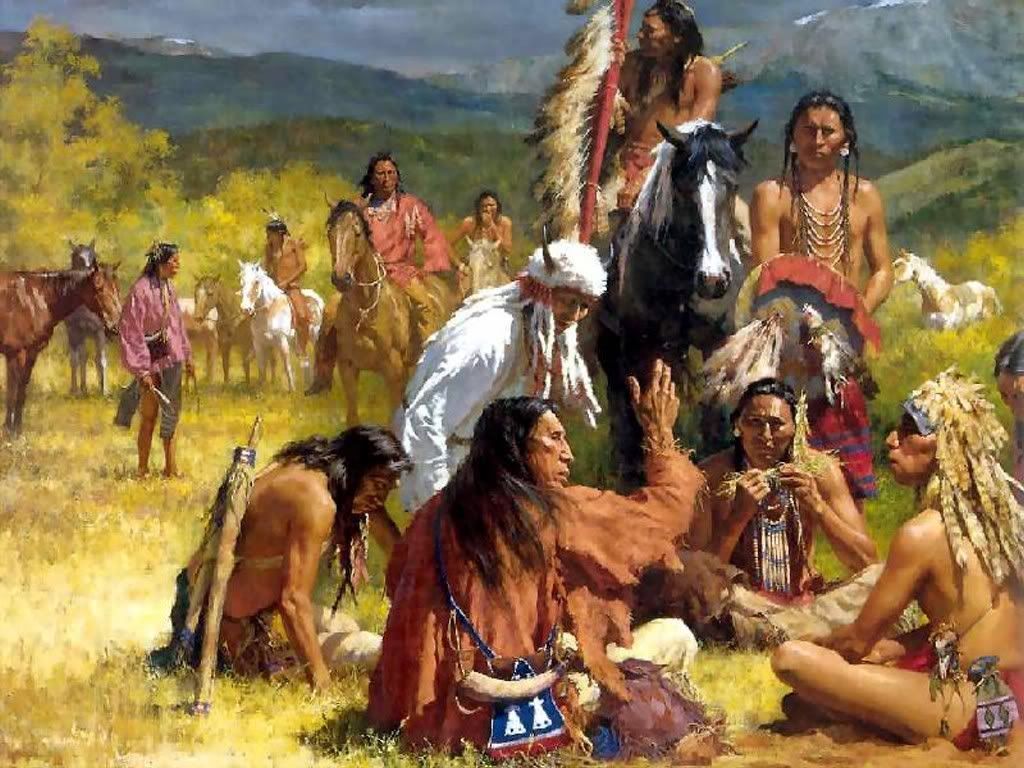 Of course, this film was fiction; and it almost had a "fantasy" type of feel to it. To say the least, there was no doubt about who the "good guys" and "bad guys" were. Since the film 'Dances with Wolves', it has been fashionable to portray Amerindians in a positive light, and Europeans in a negative light. It's difficult to do a review and also avoid this paradigm. The movie starts with an Amerindian woman seeing a "white horse" which chases her, and she doesn't know what it is; and that pretty much set the stage. The horse may have appeared like a dragon to the unknowing, and this horse was white. Shortly after, an earlier scene is shown of an earlier Viking invasion where a boy is left behind, and is adopted into "the people of the dawn." Amerindian life is then shown to be very peaceful, based on inter-tribal trade; beyond which the entire movie is non-stop violence as the "dragon men" return.
Of course, this film was fiction; and it almost had a "fantasy" type of feel to it. To say the least, there was no doubt about who the "good guys" and "bad guys" were. Since the film 'Dances with Wolves', it has been fashionable to portray Amerindians in a positive light, and Europeans in a negative light. It's difficult to do a review and also avoid this paradigm. The movie starts with an Amerindian woman seeing a "white horse" which chases her, and she doesn't know what it is; and that pretty much set the stage. The horse may have appeared like a dragon to the unknowing, and this horse was white. Shortly after, an earlier scene is shown of an earlier Viking invasion where a boy is left behind, and is adopted into "the people of the dawn." Amerindian life is then shown to be very peaceful, based on inter-tribal trade; beyond which the entire movie is non-stop violence as the "dragon men" return.
According to the historical record, there was a short-lived Viking settlement on the eastern Canadian coast, but there is no record of any warfare; much less the genocidal actions portrayed. The real Vikings attacked everyone, and did so as raiding parties. They didn't just slaughter people for the fun of it. The Vikings of this movie looked more like the Hells Angels motorcycle gang than to those of the historical record. They were huge and monster-like; completely covered in armor and heavy material. In many Roman movies, the Romans are portrayed as righteous despite the fact that they were invading another people, as in 'Gladiator' (the invasion of Germania). Here the Amerindians were pragmatically speaking English for the viewer, but the Vikings spoke their own language.
The early scenes seemed heartfelt enough, with the now grown Viking boy close to his adopted family, yet still struggling to fit in. At times later in the film, this dynamic did become a little bit ungenuine. The tribal chieftain--the "Pathfinder"--then tells the now grown man called "Ghost" who he is: "You were born of the dragon men, but you are ours now." There is a semi-romance thoughout the film between Ghost and the Pathfinder's daughter "Starfire." Ghost has one possession from his Viking roots; that being a large deadly sword that he practices with frequently.
 The director seems to hold back from displaying cultural Norse/Odinic symbolism; as almost to try to place them more in a general "bad-guy" category. Only the dragon-head on a viking ship early in the movie was shown as a symbol. Even the horned helmets appeared different than what we perceive to be those of the Vikings; with these horns more like Satanic ram horns... sharpened and turned downward to the jawline on either side. I believe that I saw what at least appeared to be some Celtic knotwork on a couple of Viking breastplates, but I'm not certain.
The director seems to hold back from displaying cultural Norse/Odinic symbolism; as almost to try to place them more in a general "bad-guy" category. Only the dragon-head on a viking ship early in the movie was shown as a symbol. Even the horned helmets appeared different than what we perceive to be those of the Vikings; with these horns more like Satanic ram horns... sharpened and turned downward to the jawline on either side. I believe that I saw what at least appeared to be some Celtic knotwork on a couple of Viking breastplates, but I'm not certain.
There was a movie from the late 70s called 'The Norsemen', which portrayed a Viking incursion into North America, and which included warfare with Amerindians. 'Pathfinder" portrayed the Vikings almost like a perception of what we think of as "Nazis." "Gunnar," the chieftain--in particular, made references to the Amerindians as inferior, uncivilized, and savages; despite the brutality of the portrayed-Vikings, who murdered entire villages. They even hung someone upside down with their head in the flames, and pulled a man apart by tying his wrists with rope.
The cherry on top was they they even had the gall to call Ghost a "traitor" when he fought back. Ghost, at one key point, said in response "You're not my kind." At the end, there was a reference to keeping "the worlds of hate away from our shores." That's sort've an odd way to word it, unless those "worlds" were in reference to European "worlds" (Greek, Roman, Viking, English, French, Spanish, Portuguese, German, Russian, Venetian, etc. empires).
If you just want to see some action and fighting, then this is an okay movie if you don't take it seriously. I know, some people need to be portrayed as "evil" or you don't have a movie! Still, they took this to a real extreme. The Vikings weren't racial genocidists. They invaded everyone, very much including other Germanic peoples.
.
This is a month late, but it's still the early half of Winter. Lisa Thiel has been one of the more popular neopagan music artists out there for awhile.
'Yule' (Winter Solstice) - Lisa Thiel
Chorus:
Enter the night and you’ll find the light,
That will carry you to your dreams.
Enter the night, let your spirit take flight,
In the field of infinite possibilities
On the longest night we search for the light,
And we find it deep within.
Open your eyes to embrace what is wise,
And see the light of your own soul shining.
(Chorus)
Wrap up in the cloak of starry darkness my child, And you’ll find the center of all things.
For from this space of the deepest dark place,
Life Eternal does spring.
(Chorus)
So when you find that spark
When you dream in the dark,
Hold it close to your heart and know.
All that you see is all that can be
When you give birth to the dreams of your soul.
(Chorus)
.
I have a ceramic pot, originally a planter for a bamboo plant, with this symbol on it. Being blue, a color of the sea, somehow I perceived it to be perhaps Japanese. Since I was not familiar with it--it appears that most Chinese symbols are similar to their letter-characters--I thought that it could be of European origin. It reminded me a bit of the Saint John's Arms, when this symbol is used in a circle.
Finally I saw the symbol on the cover of a book about Chinese spirituality. It was then easy to look up. There seems to be other Chinese good luck symbols, although this may be the main one. There are variations of it. I think some of these symbols mean different, but similar concepts. For example, "vigor," "good luck," "prosperity," or "good health." I believe that this Chinese good luck symbol has a certain energy to it, and that could apply to any non-Chinese person up to a point.
Wikipedia shows four symbols as being related in design or meaning--Camunian Rose, Saint John's Arms, Valknut, and at least the European version of the Swastika. Actually, this symbol is found all over the world; from India to the Mediterranean and beyond. Even the Aztecs used it. The original European version is, it appears, generally a round solar cross with for notches around it. The square version could have an ancient Saturnian-connection to it, but despite the Swastika being a potential link to ancient mystery schools moving westward over many centuries--and certainly part of world history in any case--we aren't really supposed to discuss it due to the twelve year Nazi period. I am
undecided about the existence of "mystery schools" in the ancient world
that tie in Phoencia-Cannan and the Druidic cultures of western Europe.
.
Thule, Saturn, & an alternative explanation: Part 4
From east to west: Celts as Hyperboreans
Six classical Greek authors also came to identify these mythical people at the back of the North Wind with their Celtic neighbours in the north: Antimachus of Colophon, Protarchus, Heraclides Ponticus, Hecataeus of Abdera, Apollonius of Rhodes and Posidonius of Apamea. The way the Greeks understood their relationship with non-Greek peoples was significantly moulded by the way myths of the Golden Age were transplanted into the contemporary scene, especially in the context of Greek colonisation and trade. As the Riphean mountains of the mythical past were identified with the Alps of northern Italy, there was at least a geographic rationale for identifying the Hyperboreans with the Celts living in and beyond the Alps, or at least the Hyperborean lands with the lands inhabited by the Celts. A reputation for feasting and a love of gold may have reinforced the connection.
Abaris the Hyperborean
A particular Hyperborean legendary healer was known as "Abaris" or "Abaris the Healer" whom Herodotus first described in his works. Plato (Charmides, 158C) regarded Abaris as a physician from the far north, while Strabo reported Abaris was Scythian like the early philosopher Anacharsis (Geographica, 7. 3. 8).
Modern interpretations
As with other legends of this sort, details can be selectively reconciled with modern knowledge. Above the Arctic Circle, from the spring equinox to the autumnal equinox (depending on latitude), the sun can shine for 24 hours a day; at the extreme (that is, the Pole), it rises and sets only once a year, possibly leading to the erroneous conclusion that a "day" for such persons is a year long, and therefore that living a thousand days would be the same as living a thousand years.
Since Herodotus places the Hyperboreans beyond the Massagetae and Issedones, both Central Asian peoples, it appears that his Hyperboreans may have lived in Siberia. Heracles sought the golden-antlered hind of Artemis in Hyperborea. As the reindeer is the only deer species of which females bear antlers, this would suggest an arctic or subarctic region. Following J.D.P. Bolton's location of the Issedones on the south-western slopes of the Altay mountains, Carl P.Ruck places Hyperborea beyond the Dzungarian Gate into northern Xinjiang, noting that the Hyperboreans were probably Chinese.
Amber arrived in Greek hands from some place known to be far to the north. Avram Davidson proposed the theory that Hyperborea was derived from a logical (though erroneous) explanation by the Greeks for the insects, which apparently originated in a warm climate, found embedded inside the amber arriving in their cities from cold northern countries.
Unaware of the explanation offered by modern science (i.e. that these insects had lived in times when the climate of northern Europe was much warmer, their bodies preserved unchanged in the amber) the Greeks came up with the idea that the coldness of northern countries was due to the cold breath of Boreas, the North Wind. So if one travelled "beyond Boreas" one would find a warm and sunny land.

Identification as Hyperboreans
Northern Europeans (Scandinavians), when confronted with the classical Greco-Roman culture of the Mediterranean, identified themselves with the Hyperboreans, neglecting the traditional aspect of a perpetually sunny land beyond the north. This idea was especially strong during the 17th century in Sweden, where the later representatives of the ideology of Gothicism declared the Scandinavian peninsula both the lost Atlantis and the Hyperborean land. The north of the Scandinavian peninsula is crossed by the Arctic Circle, north of which there are sunless days during the winter and sunlit nights during the summer. Western European culture equally self-identified as Hyperborean; thus Washington Irving, in elaborating on Astoria in the Pacific Northwest, was of the opinion that
While the fiery and magnificent Spaniard, inflamed with the mania for gold, has extended his discoveries and conquests over those brilliant countries scorched by the ardent sun of the tropics, the adroit and buoyant Frenchman, and the cool and calculating Briton, have pursued the less splendid, but no less lucrative, traffic in furs amidst the hyperborean regions of the Canadas, until they have advanced even within the Arctic Circle.
In this vein the self-described "Hyperborean-Roman Company" (Hyperboreisch-römische Gesellschaft) were a group of northern European scholars who studied classical ruins in Rome, founded in 1824 by Theodor Panofka, Otto Magnus von Stackelberg, August Kestner and Eduard Gerhard. Friedrich Nietzsche referred to his sympathetic readers as Hyperboreans in The Antichrist (written 1888, published 1895): "Let us look each other in the face. We are Hyperboreans – we know well enough how remote our place is." He quoted Pindar and added "Beyond the North, beyond the ice, beyond death – our life, our happiness."
The term "Hyperborean" still sees some jocular contemporary use in reference to groups of people who live in a cold climate. Under the Library of Congress Classification System, the letter subclass PM includes "Hyperborean Languages", a catch-all category that refers to all the linguistically unrelated languages of peoples living in Arctic regions, such as the Inuit.
Hyperborean Indo-European hypothesis
John G. Bennett wrote a research paper entitled "The Hyperborean Origin of the Indo-European Culture" (Journal Systematics, Vol. 1, No. 3, December 1963) in which he claimed the Indo-European homeland was in the far north, which he considered the Hyperborea of classical antiquity. This idea was earlier proposed by Bal Gangadhar Tilak (whom Bennett credits) in his The Arctic Home in the Vedas (1903) as well as the Austro-Hungarian ethnologist Karl Penka (Origins of the Aryans, 1883).
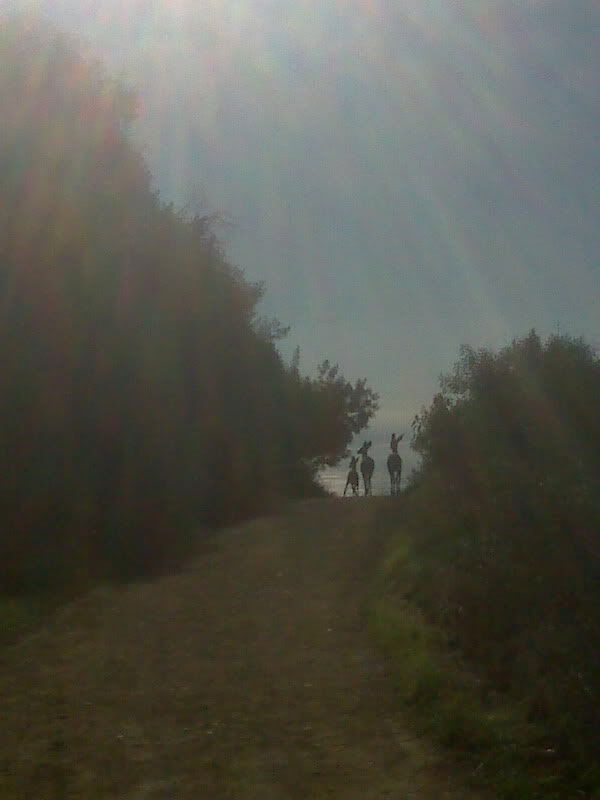 Hyperborea in modern esoteric thought
Hyperborea in modern esoteric thought
H.P. Blavatsky, René Guénon and Julius Evola all shared the belief in the Hyperborean, polar origins of Mankind and a subsequent solidification and devolution. According to these esoterists, Hyperborea was the Golden Age polar center of civilization and spirituality; mankind does not rise from the ape, but progressively devolves into the apelike condition as it strays physically and spiritually from its mystical otherworldly homeland in the Far North, succumbing to the demonic energies of the South Pole, the greatest point of materialization (see Joscelyn Godwin, Arktos: The Polar Myth).
Robert Charroux first related the Hyperboreans to an ancient astronaut race of "reputedly very large, very white people" who had chosen "the least warm area on the earth because it corresponded more closely to their own climate on the planet from which they originated". Miguel Serrano was influenced by Charroux's writings on the Hyperboreans.
Cultural references
George MacDonald's At the Back of the North Wind features a feminine version of Boreas, named "North Wind", who takes a sickly boy, "Diamond", to "the back of the North Wind", which she herself cannot enter. More than two chapters are devoted to a description of MacDonald's Hyperborea and how Diamond got there.
Dante's Paradise, in his Divine Comedy, is the subject of Hyperborean allusions: it is figured geographically north of Purgatory; and, great and little bears (symbols of the polar north) appear above the summit of Mount Purgatorio.
In Herman Melville's Moby Dick, Ishmael suggests that, among other things, the painting in the Spouter Inn in Chapter 3 could be "a Hyperborean winter scene."
Clark Ashton Smith authored a series of short stories known as the Hyperborean cycle (1931–58). Some elements were borrowed by H. P. Lovecraft in what later became known as the Cthulhu Mythos.
In Robert E. Howard's Conan stories (1932–36), Hyperborea is a land to the north-east of Conan's native Cimmeria.
The "Hyperboreans" (Hyperboreisch-römische Gesellschaft) were a group of northern European scholars who studied classical ruins in Rome, founded in 1824 by Theodor Panofka, Otto Magnus von Stackelberg, August Kestner and Eduard Gerhard.
Australian artist Norman Lindsay in July 1923 first exhibited his etching Hyperborea in Sydney. A month later he published two essays about Hyperborea, the first in Vision, No. 2, in which he said that only a picture or a poem could describe Hyperborea. The essays were later combined as Hyperborea: Two Fantastic Travel Essays by Fanfrolico Press in 1928.
Friedrich Nietzsche referred to those who followed his philosophy as "Hyperboreans" in The Antichrist (translated by Anthony M. Ludovici.)
German electronic music pioneers Tangerine Dream released an album with the title Hyperborea in 1983.
Hyperborea and its inhabitants are referenced several times in the back history of Hellboy comic book universe, particularly in the B.P.R.D series.
In Stephen King's "Dark Tower" series, Calvin Tower calls Jake Chambers "Hyperborean Wanderer."
Ruins of the Hyperborean civilization play a role in the plot of Indiana Jones and the Fate of Atlantis.
In The Last Olympian by Rick Riordan Hyperborean Giants are fighting for Kronos and, with Prometheus, give Percy Jackson Pandora's Box, containing hope. In Rick Riordan's subsequent book The Son of Neptune, Percy Jackson and his friends also encounter the giants in Alaska on their quest to free the god of death, Thanatos.
The Hyperboreans are the subject of the title track of album Hyperboreans by Jackie Oates, an English folk music singer/songwriter.
The Hyperboreans are the subject of the many songs by Bal-Sagoth, an English symphonic black metal band.
The 1977 film Sinbad and the Eye of the Tiger wove a number of related references into the plot. Hyperborea was the name given to an island far in the North Sea, described in the film by the witch Zenobia as being "past the Celtic Isles". The island had been home to the Arimaspi and contained a pyramid structure called The Shrine of the Four Elements, located in a temperate valley hidden amongst the ice of the Arctic Circle.
Several of the characters in Ulysses by James Joyce refer to themselves as Hyperborean, referring to their Celtic ethnicity.
References
Portions of this article were formerly excerpted from the public domain Lemprière's Classical Dictionary, 1848.
Bridgman, Timothy M. (2005), Hyperboreans. Myth and history in Celtic-Hellenic contacts, Studies in Classics, New York and London: Routledge
.
.
It's an incredibly warm, cloudless January evening tonight, about 70 degrees and eerily still. I just had a few ideas that I made note of recently, and I thought that I would lump them all together on this Wednesday, a day whose name was inspired by Wotan the Teutonic god of legend. Think of how many people in our society do not even know that the days of the week are named after ancient pagan gods, goddesses, and spiritual concepts. Sunday through Saturday: "Sun day," "Moon day," "Týr's day," "Wotan's day," "Thor's day," "Freya's day," and "Saturn's day."
Conflated time-spaces
There's an old saying regarding a person who may not like where they are at the moment; and it says that "your body may have to be here, but your mind can be wherever it wants to be." I had an experience on New Years Eve, and at other times too, which is a little bit of a different twist to that saying... but similar. We all have this experience, whether or not we want to acknowledge it. Sometimes we may find ourselves in a "place" which reminds us of some other unrelated faraway place from our memory or even from a perception.
Most places look and feel different with the combinations of different weather, times of the day, and the varying moods of light and shadow. So with the many different places--familiar or unfamiliar--there are endless combinations that make it entirely possible to experience one of these "geographical déjà vu experiences." Often this happens at night, where the darkness covers up most of the obvious clues that remind us of where we are. You know where you are, but under the right conditions--especially by yourself--you may have that silly idea about that "other time and place." It could even be a perception of a place where you've never been.. and it's nice to just go with it for awhile.
It's the same as listening to a song on your car radio that reminds you of a good experience from the past though a neurological association in your mind; so even though it may feel a little bit silly, you just go with it for a moment and relive the experience. Maybe even expand upon it in some way. It's amazing to me that some people are so closed-minded that they can't even experience something in their own mind without self-censorship. You can learn things about yourself through these mind exercises. It's not mere chance that one person ends up in a situation where they are nearly always in crowds, living and working in a densely populated areas; where another person always seems to live and work in quiet open places.

That's not necessarily an extrovert-introvert comparison either, but a long range consequence of internal self-will. Some people feed off of the energy of crowds, while others do not. History teaches us that there have been many men--"tough guys"--who swagger around with self assurance; but when men like this have gotten into trouble, they instantly crumble at the threat of solitary confinement. Their energy source is cut off. It's the same concept as people in a small town thinking that life in a big city would be a living hell; while people used to a big city would feel that life in a small town would be the same.
The place where I had this experience was near a business/industrial area; at the base of a mountain at night. I was having a few beers with a couple of friends. Behind us towards the mountain were familiar woods and trails. The bright lights from a couple of commercial buildings in front of us illuminated the small field and the woods behind us. I could see some lower hills dotted with homes in the distance, but most of the scenery was darkened out.. looking more like just some lights amid the darkness. Not far ahead I could hear an occasional truck ramble by on the main road while I watched its lights pass by as I sat in my fold up chair.
While sitting in the cool air drinking a Guinness under a half Moon, Venus, and the stars of this remote island amid an urban sea; it occurred to me that this particular spot created a neurological illusion in my mind of a particular spot on a particular evening one time just off of US 2 near Ironwood, Michigan. Despite the micromanaged proportions (in contrast, Ironwood is an urban island in a sea of remoteness), the two "spots" felt the same if I allowed my mind to wander. The cool night air, the woods behind us, the lights of the industrial area, and the main road here matched US 2 with the sound of an occasional truck driving by.
The only thing that would knock me back into the present time-space were the number of planes flying by. Ironically, something large and dark flying by caught my eye at one point. It was perhaps one hundred feet above us. I suspect that it was an owl, somehow symbolizing my alternate reality of the Northwoods. I have been seeing more owls lately than I ever have before. About a week ago at sunset, I saw one land on the very top of a twenty-five foot tree as I was hiking. I could see its body against the sunset as I walked downhill towards the tree, looking away from me in a southward direction; and suddenly it looked at me as I could tell by its ears. That's the second time that an owl has looked at me since December. Animal messengers?
 Streghe-Yooper folk medicine?
Streghe-Yooper folk medicine?
A "Yooper" is a native of Upper Michigan or north Wisconsin, where they have a distinct dialect called "Finglish"... a mixture of English and Finnish due to the large number of Finns who had immigrated there and the areas' relative remoteness. There also were a sizable number of immigrants from Italy, and in particular the Alpine stretches of the northeast. Within these communities were women who were known practitioners of "folk medicine"... usually tied to literally "Witches" if you go back far enough.
Recently, a woman complained to my mother about some aches and pains that she was experiencing... especially in the morning. My mother told her to place a bar of soap--packaged is fine--under the covers as she slept. Perhaps a month went by before they spoke again, and the woman raved about how the soap had helped her. She was acting excitable, even though she was usually very reserved. When I got to thinking about this later, it occurred to me that this was "folk medicine" in action! A direct link from the ancient Gaulish-Alpine village of Grömèl, to Hurley, Wisconsin, to Brisbane, California. At an earlier time, perhaps centuries ago, a crystal may have been prescribed for this problem by the local Strega.
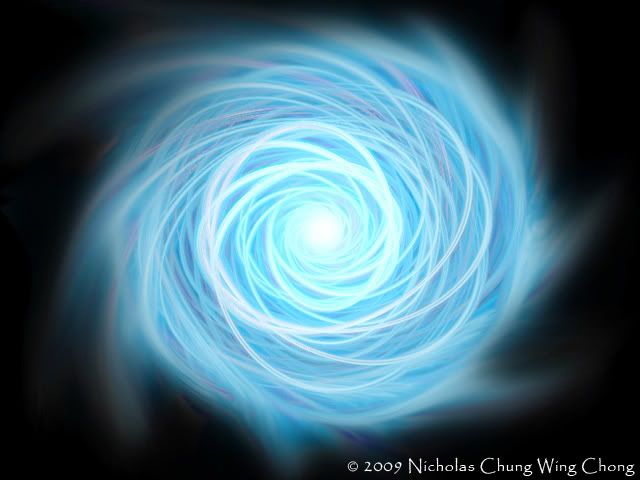 Controlling anger
Controlling anger
I have a possible answer to out-of-control anger. Just about everyone can think of times where they were angry and said and/or did things that they wish they could take back. When confronted with this sudden feeling, try to attain the discipline to at least try to think about the anger in the form of a round glowing ball of energy about the size of a football in front of you. Try to picture it as you stare at the space in front of you. Imagine the pulsating electricity of it's outer dimensions. Tell yourself that you are its master, since your emotions created it... albeit unwillingly.
Hopefully this mind exercise will at least remove the irrational element from it. Perhaps something truly needs to be said or done as a result of someones words and/or actions, but at least you will be in control, and not the ball of energy. Emergencies aside--no matter how deplorable the situation may seem at that moment--if you at least take out two seconds to at least try to picture that energy ball in front of you, your chances of regaining control are good.
 Dream symbolism
Dream symbolism
If you ever have a really dramatic or powerful dream, you really should write it down as soon as possible. You think that you will remember the details, but you will not. I just reread my own account of the most powerful dream that I ever had a few years ago, and I had forgotten most of the details. I wish that I could share some of my dreams here, but they're too personal. The symbolism that our minds conjure up is amazing. Dreams are the way that the mind tries to make sense of our personal issues. They can range from the glorious to the depths of negativity.
Although I am not comfortable giving an account of my inspirational dreams at this point, I did have a dream recently that gave an example of this mind symbolism. I have had four primary enemies in my life. One person I don't see much of anymore, while the other three I have not yet been able to rid myself of. One is my "big enemy," while the other two are slightly lessor enemies that are part of one unit. After recently dealing with all three of them, I had a dream about this frustrating long-term saga.
I was walking up to a driveway of a nearby street collecting for something it seemed. This was the third house on that block, which is a very steep street. Three = "three enemies"; Steep = "the stress" from these enemies. As I walked up the driveway, there was a large bush to the left of me, and a car to the right. Suddenly a large red snake blocked the path in front of me. Its dimensions were not rough like a rattlesnake, but more smooth and rounded. As I turned around to leave, a second large red snake blocked the path to the sidewalk.
As I was trying to figure out what to do, a third red snake--larger than the other two--appeared in the bush which had a slight overhang over the driveway, with the snake outstretched directly above me. I dropped to one knee, blocked on all six sides. The largest snake was my primary enemy, and the other two snakes were the other two of my enemies. Always trying to trap me. This is very typical of dream symbolism, albeit a negative example.
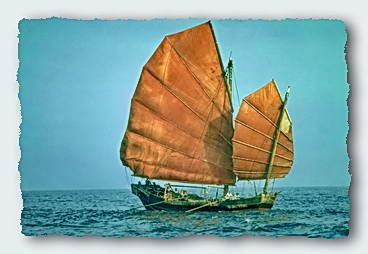 Miscellaneous odds & ends
Miscellaneous odds & ends
From the ancient proto-European polytheism--which later developed into what generally became known as "European witchcraft"--there was the "triple goddess" symbolized by "three moons." However, wouldn't it seem that there would be a "triple god" as well... especially since the two fit together? A "triple sun?" Ironically, there are examples in nature where there is an illusion of a triple sun under the right conditions.
I find it interesting that the historical Chinese sailing vessel--"junks"--are not really creatively used as symbols of Chinese culture. They have such a unique design and coloring, even the smaller ones. I think in most other cultures, they would flaunt such a symbol.. as with the Viking ships.
I read somewhere recently of someone of Lombard descent suggesting that an "Iron Crown of Lombardy" could be fashioned as a wristband. Since this is one of the chief symbols of the ancient nation, this idea makes sense to me. It could also be masculinized to suit a man.
I saw where there are "outdoor picture frames" available on the market now. This is a good opportunity for someone to place any type of symbol or person in an outdoor location... perhaps serving as some type of memorial, or to somehow have that person's energy around. You could use your imagination, as maybe a certain sized frame could be placed in a carved out section of a large stone/rock or timber/log and placed in a good spot.
A couple of weeks ago, I watched the popular 2005 movie 'Walk the Line' with my mother. We had seen it once before. It was about the early careers of Johnny Cash and June Carter, played by Joaquin Phoenix and Reese Witherspoon. Coincidentally, during the following week, I saw where "the man in black" had played at the 23 Club in Brisbane decades ago. He and a few other famous musical artists' pictures, like Jerry Lee Lewis, were posted behind glass outside. There are always connections and tie-ins when you look for them
.
Thule, Saturn, & an alternative explanation: Part 3
The 80's musical track from the above video is entitled 'Hyperborea' by a German band called Tangerine Dream, which has been active from 1967 to the present. The theme song ('Betrayal') from the 1977 movie 'Sorcerer' was produced by them, as well as over sixty other film tracks. Anyway, I thought the above video captured the allure of what now seems clear to me to have been a real place; although there's no proof as of yet that it was a great civilization. At the very least, this ancient land of legend--and it's latter migrating peoples--are a big part of Indo-European history.
The "Arctic Home in the Vedas" is not just about Teutonic origins, but may say just as much about the very ancient proto-European culture. as well as the original pre-Greek and Roman Mediterranean civilizations. All three of those subraces are not given proper respect as far as their true origins. The Tarim mummies are just the tip of the iceberg. In hindsight, Bal Gangadhar Tilak was quite a pioneer; and the evidence proving him correct is mounting.
The ancient Greeks must have had periodic contact with these Teutons who were migrating outward after the last glacial movement. Perhaps some of them may even have contributed to ancient Greece and Assyria. I'm going to present this year some stunning information that may blow this thing out've the water as far as at least part of the Arctic circle being a livable place four or five thousand years ago. Much of this Greek-Teutonic contact likely occurred at the early stages of Greek civilization, where the legend developed.
This Hyperborean hypothesis seems to point to the logical location of northern Central Asia for what was probably some of the later settlements... like the Tarim Basin. It seems as though Greek conventional thinking later placed the Teutons as being from a location more like the British Isles; but they probably had it correct early on. Starting about three thousand years ago, some of these Teutons were migrating into Europe and merging with the proto-European/Alpine peoples; thus forming the "Celtic cultures." This is probably what confused them. It still confuses us today! Teutons were then associated with mary parts of the north from ancient Briton to ancient Tibet.
Hyperborea (Wikipedia)
In Greek mythology the Hyperboreans (Ancient Greek: Ὑπερβόρε(ι)οι, pronounced [hyperbóre(ː)ɔi̯]; Latin: Hyperborei) were a mythical people who lived "beyond the North Wind". The Greeks thought that Boreas, the god of the North Wind (one of the Anemoi, or "Winds") lived in Thrace, and therefore Hyperborea indicates a region that lay far to the north of Thrace.
This land was supposed to be perfect, with the sun shining twenty-four hours a day, which to modern ears suggests a possible location within the Arctic Circle. However, it is also possible that Hyperborea had no real physical location at all - for according to the classical Greek poet Pindar,
neither by ship nor on foot would you find
the marvellous road to the assembly of the Hyperboreans.
Pindar also described the otherworldly perfection of the Hyperboreans:
Never the Muse is absent
from their ways: lyres clash and flutes cry
and everywhere maiden choruses whirling.
Neither disease nor bitter old age is mixed
in their sacred blood; far from labor and battle they live.
Early sources
Herodotus
The earliest extant source that mentions Hyperborea in detail is Herodotus's Histories (Book IV, Chapters 32–36), written circa 450 BC. However, Herodotus recorded three earlier sources that supposedly mentioned the Hyperboreans, including Hesiod and Homer, the latter purportedly having written of Hyperborea in his lost work Epigoni: "if that be really a work of his." Herodotus also wrote that the 7th century BC poet Aristeas wrote of the Hyperboreans in a poem (now lost) called Arimaspea about a journey to the Issedones, who are estimated to have lived in the Kazakh Steppe. Beyond these lived the one-eyed Arimaspians, further on there were gold-guarding griffins, and beyond these the Hyperboreans. Naturally, Herodotus used to assume the location of Hyperborea somewhere in the Northeast Asia.
Pindar, Simonides of Ceos and Hellanicus of Lesbos, contemporaries of Herodotus in the 5th century BC, also all briefly described or referenced the Hyperboreans in their works.

Location of Hyperborea
The Hyperboreans were believed to live beyond the snowy Riphean Mountains which Homer first referenced in his Iliad (15. 171; 19. 358)[7] or beyond the home of Boreas.
According to Pausanias: "The land of the Hyperboreans, men living beyond the home of Boreas."
Homer placed Boreas in Thrace, and therefore Hyperborea in his opinion was somewhere to the north of Thracian territory, perhaps Dacia. Sophocles (Antigone, 980–987), Aeschylus (Agamemnon, 193; 651), Simonides of Ceos (Schol. on Apollonius Rhodius, 1. 121) and Callimachus (Delian, [IV] 65) also placed Boreas in Thrace. Other ancient writers however believed the home of Boreas or the Riphean Mountains were in a different location. For example, Hecataeus of Miletus believed that the Riphean Mountains were adjacent to the Black Sea. Alternatively Pindar placed the home of Boreas, the Riphean Mountains and Hyperborea all near the Danube. Heraclides Ponticus and Antimachus in contrast identified the Riphean Mountains with the Alps, and the Hyperboreans as a Celtic tribe (perhaps the Helvetii) who lived just beyond them. Aristotle placed the Riphean mountains on the borders of Scythia, and Hyperborea further north. Hecataeus of Abdera and others believed Hyperborea was Britain.
Later Roman and Greek sources continued to change the location of the Riphean mountains, the home of Boreas, as well as Hyperborea, supposedly located beyond them. However all these sources agreed these were all in the far north of Greece or southern Europe. The ancient grammarian Simmias of Rhodes in the 3rd century BC connected the Hyperboreans to the Massagetae and Posidonius in the 1st century BC to the Western Celts, but Pomponius Mela placed them even further north in the vicinity of the Arctic.
In maps based on reference points and descriptions given by Strabo, Hyperborea, shown variously as a peninsula or island, is located beyond what is now France, and stretches further north-south than east-west. Other descriptions put it in the general area of the Ural Mountains.
Later classical sources
Plutarch, writing in the 1st century AD, connected the Hyperboreans with the Gauls who had sacked Rome in the 4th century BC (see Battle of the Allia).
Aelian, Diodorus Siculus and Stephen of Byzantium all recorded important ancient Greek sources on Hyperborea, but added no new descriptions.
The 2nd century AD Stoic philosopher Hierocles equated the Hyperboreans with the Scythians, and the Riphean Mountains with the Ural Mountains. Clement of Alexandria and other early Christian writers also made this same Scythian equation.
Ancient identification with Britain
Hyperborea was identified with Britain first by Hecataeus of Abdera in the 4th century BC, as in a preserved fragment by Diodorus Siculus:
In the regions beyond the land of the Celts there lies in the ocean an island no smaller than Sicily. This island, the account continues, is situated in the north and is inhabited by the Hyperboreans, who are called by that name because their home is beyond the point whence the north wind (Boreas) blows; and the island is both fertile and productive of every crop, and has an unusually temperate climate.
Hecateaus of Abdera also wrote that the Hyperboreans had a 'circular temple' on their island, and some scholars have identified this with Stonehenge. This is further supported by the fact that Stonehenge has been known as Apollo's Temple since classical antiquity, and Hyperborea in Greek legend was related to Apollo.
Pseudo-Scymnus, around 90 BC, wrote that Boreas dwelled at the extremity of Gaulish territory, and that he had a pillar erected in his name on the edge of the sea (Periegesis, 183). Some have claimed this is a geographical reference to northern France, and Hyperborea as the British Isles which lay just beyond the English Channel.
Ptolemy (Geographia, 2. 21) and Marcian of Heraclea (Periplus, 2. 42) both placed Hyperborea in the North Sea which they called the "Hyperborean Ocean."
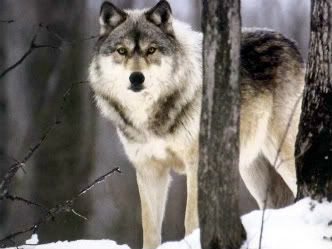 Legends
Legends
Alone among the Twelve Olympians, Apollo was venerated among the Hyperboreans, the Hellenes thought: he spent his winter amongst them. For their part the Hyperboreans sent mysterious gifts, packed in straw, which came first to Dodona and then were passed from tribe to tribe until they came to Apollo's temple on Delos (Pausanias). Abaris, Hyperborean priest of Apollo, was a legendary wandering healer and seer. Theseus visited the Hyperboreans, and Pindar transferred Perseus's encounter with Medusa there from its traditional site in Libya, to the dissatisfaction of his Alexandrian editors.
Along with Thule, Hyperborea was one of several terrae incognitae to the Greeks and Romans, where Pliny, Pindar and Herodotus, as well as Virgil and Cicero, reported that people lived to the age of one thousand and enjoyed lives of complete happiness. Hecataeus of Abdera collated all the stories about the Hyperboreans current in the fourth century BC and published a lengthy treatise on them, lost to us, but noted by Diodorus Siculus (ii.47.1–2). Also, the sun was supposed to rise and set only once a year in Hyperborea; which would place it above or upon the Arctic Circle, or, more generally, in the arctic polar regions.
The ancient Greek writer Theopompus in his work Philippica claimed Hyperborea was once planned to be conquered by a large race of soldiers from another island (some have claimed this was Atlantis), the plan though was abandoned because the soldiers from Meropis realized the Hyperboreans were too strong for them and the most blessed of people; this unusual tale, which some believe was satire or comedy, was preserved by Aelian (Varia Historia, 3. 18).
Apollonius wrote that the Argonauts sighted Hyperborea, when they sailed through Eridanos.
Physical appearance
Greek legend asserts that the Boreades, who were the descendants of Boreas and the snow-nymph Chione (or Khione), founded the first theocratic monarchy on Hyperborea. This legend is found preserved in the writings of Aelian: "This god [Apollon] has as priests the sons of Boreas (North Wind) and Chione (Snow), three in number, brothers by birth, and six cubits in height [about 3 metres]."
Diodorus Siculus added to this account: "And the kings of this (Hyperborean) city and the supervisors of the sacred precinct are called Boreadae, since they are descendants of Boreas, and the succession to these positions is always kept in their family."
The Boreades were thus believed to be giant kings, around 3 metres tall, who ruled Hyperborea.
No other physical descriptions of the Hyperboreans are provided in classical sources. However, Aelius Herodianus, a grammarian in the 3rd century, wrote that the mythical Arimaspi were identical to the Hyperboreans in physical appearance (De Prosodia Catholica, 1. 114) and Stephanus of Byzantium in the 6th century wrote the same (Ethnica, 118. 16). The ancient poet Callimachus described the Arimaspi as having fair hair but it is disputed whether the Arimaspi were Hyperboreans.
.
Full Wolf Moon (January)
Amid the cold and deep snows of midwinter, the wolf packs howled hungrily outside Indian villages. Thus, the name for January’s full Moon. Sometimes it was also referred to as the Old Moon, or the Moon After Yule. Some called it the Full Snow Moon, but most tribes applied that name to the next Moon.
.
Thule, Saturn, & an alternative explanation: Part 2
Thule (Wikipedia)
Inhabitants of Thule
The inhabitants or people of Thule are described in most detail by Strabo in his Geographica, having preserved fragments of the account of Pytheas who was an alleged eye-witness in the 4th century BC:
...the people (of Thule) live on millet and other herbs, and on fruits and roots; and where there are grain and honey, the people get their beverage, also, from them. As for the grain, he says, since they have no pure sunshine, they pound it out in large storehouses, after first gathering in the ears thither; for the threshing floors become useless because of this lack of sunshine and because of the rains.
Solinus in his Polyhistor repeated these descriptions, noting that the people of Thule had a fertile land where they grew a good production of crop and fruits.
Claudian believed that the inhabitants of Thule were Picts. This is supported by a physical description of the inhabitants of Thule by the Roman poet Silius Italicus, who wrote that the people of Thule were blue painted:
... the blue-painted native of Thule, when he fights, drives around the close-packed ranks in his scythe-bearing chariot.
The Picts are often said to have derived their name from Latin pingere "to paint"; pictus, "painted". Martial talks about "blue" and "painted Britons", just like Julius Caesar.
Eustathius of Thessalonica in his 12th century commentary on the Iliad, wrote that the inhabitants of Thule were at war with a dwarf-like stature tribe only 20 fingers in height. The American classical scholar Charles Anthon believed this legend may have been rooted in history (although exaggerated), if the dwarf or pygmy tribe were interpreted as being a smaller aboriginal tribe of Britain the people on Thule had encountered.

Middle Ages to nineteenth century
During the Middle Ages the name was used first of all to denote Iceland, such as by Dicuil, by the Anglo-Saxon monk Venerable Bede in De ratione temporum, by the Landnámabók, by the anonymous Historia Norwegie and by the German cleric Adam of Bremen in his Deeds of Bishops of the Hamburg Church, where they cite ancient writers' use of Thule but also new knowledge since the end of antiquity. All these authors also understood that other islands were situated to the north of Britain.
Petrarch in the 14th century wrote in his Epistolae familiares (or Familiar Letters) that Thule lay in the unknown regions of the far north-west.
A madrigal by Thomas Weelkes entitled Thule from 1600, describes it thus:
Thule, the period of cosmography,
Doth vaunt of Hecla, whose sulphureous fire
Doth melt the frozen clime and thaw the sky;
Trinacrian Etna's flames ascend not higher...
Note: Hekla is an Icelandic volcano. Thule is referred to in Goethe's poem "Der König in Thule" (1774), famously set to music by Franz Schubert (D 367, 1816), and in the collection Ultima Thule (1880) by Henry Wadsworth Longfellow.
Edgar Allan Poe's poem "Dream-Land" (1844) begins with the following stanza:
By a route obscure and lonely,
Haunted by ill angels only,
Where an Eidolon, named Night,
On a black throne reigns upright,
I have reached these lands but newly
From an ultimate dim Thule –
From a wild weird clime, that lieth, sublime,
Out of Space – out of Time.
 Modern use
Modern use
A municipality in northern Greenland (Avannaa) was formerly named Thule after the mythical place. The Thule People, the predecessor of modern Inuit Greenlanders, were named after the Thule region. In 1953, Thule became Thule Air Base, operated by United States Air Force. The population was forced to resettle to Qaanaaq, 67 miles to the north (76°31′50.21″N 68°42′36.13″W only 840 NM from the North Pole).
Southern Thule is a collection of the three southernmost islands in the South Sandwich Islands in the South Atlantic Ocean, one of which is called Thule Island. The island group is a part of the British overseas territory of the United Kingdom and uninhabited.
The Scottish Gaelic for Iceland is "Innis Tile", which means literally the "Isle of Thule". Ultima Thule was the title of the 1929 novel by Henry Handel Richardson, set in colonial Australia.
Additionally, Thule lends its name to the 69th element in the periodic table, Thulium.
Ultima Thule is also the name of a location in the Mammoth Cave system. It was formerly the terminus of the known-explorable southeastern (upstream) end of the passage called "Main Cave," before discoveries made in 1908 by Ed Bishop and Max Kaemper showed an area accessible beyond it, now the location of the Violet City Entrance. The Violet City Lantern tour offered at the cave passes through Ultima Thule near the conclusion of the route.
Popular culture
Thule is used in Hal Foster's work, Prince Valiant, as the homeland of the eponymous character.
Nazi "Aryan" Thule
Nazi occultists believed in a historical Thule/Hyperborea as the ancient origin of the Aryan race. Much of this fascination was due to rumours surrounding the Oera Linda Book "found" by Cornelis Over de Linden during the 19th century. The Oera Linda Book was translated into German in 1933 and was favored by Heinrich Himmler. The book has since been thoroughly discredited. Professor of Frisian Language and Literature Goffe Jensma wrote that the three authors of the translation intended it "to be a temporary hoax to fool some nationalist Frisians and orthodox Christians and as an experiential exemplary exercise in reading the Holy Bible in a non-fundamentalist, symbolical way."
The Traditionalist School expositor Rene Guenon believed in the existence of ancient Thule on "initiatic grounds" "alone". According to its emblem, the Thule Society was founded on August 18, 1918. It had close links to the Deutsche Arbeiter Partei (DAP), later the Nationalsozialistische Deutsche Arbeiterpartei (NSDAP, the Nazi party). One of its three founding members was Lanz von Liebenfels (1874–1954). In his biography of Liebenfels (Der Mann, der Hitler die Ideen gab, Munich 1985), the Viennese psychologist and author Wilhelm Dahm wrote: "The Thule Gesellschaft name originated from mythical Thule, a Nordic equivalent of the vanished culture of Atlantis. A race of giant supermen lived in Thule, linked into the Cosmos through magical powers. They had psychic and technological energies far exceeding the technical achievements of the 20th century. This knowledge was to be put to use to save the Fatherland and create a new race of Nordic Aryan Atlanteans. A new Messiah would come forward to lead the people to this goal." In his history of the SA (Mit ruhig festem Schritt, 1998), Wilfred von Oven, Joseph Goebbels' press adjutant from 1943 to 1945, confirmed that Pytheas' Thule was the historical Thule for the Thule Gesellschaft.
.
Thule, Saturn, & an alternative explanation: Part 1
The ancient original Teutonic homeland which I have loosely coined "Týrland," was first written about by ancient Greeks and Romans (Thule). This land was apparently based on legends of a land in the "far north" going clear back into the ancient world. Speculation since the time of these writings has always suggested various locations in the far north of Europe, Greenland, and northern stretches of western Asia. It was not even determined who the inhabitants of Thule were. Therefore, then as now, Thule has become something of a legend such as Atlantis or Lemuria.
Thule (Wikipedia)
Thule (Greek: Θούλη, Thoúlē), also spelled Thula, Thila, or Thyïlea, is, in classical European literature and maps, a region in the far north. Though often considered to be an island in antiquity, modern interpretations of what was meant by Thule often identify it as Norway, an identification supported by modern calculations. Other interpretations include Orkney, Shetland, and Scandinavia. In the Late Middle Ages and Renaissance, Thule was often identified as Iceland or Greenland. Another suggested location is Saaremaa in the Baltic Sea. The term ultima Thule in medieval geographies denotes any distant place located beyond the "borders of the known world". Sometimes it is used as a proper noun (Ultima Thule) as the Latin name for Greenland when Thule is used for Iceland.
Ancient geography
The Greek explorer Pytheas is the first to have written of Thule, doing so in his now lost work, On the Ocean, after his travels between 330 BC and 320 BC. He supposedly was sent out by the Greek city of Massalia to see where their trade-goods were coming from. Descriptions of some of his discoveries have survived in the works of later, often skeptical, authors. Polybius in his Histories (c. 140 BC), Book XXXIV, cites Pytheas as one "who has led many people into error by saying that he traversed the whole of Britain on foot, giving the island a circumference of forty thousand stades, and telling us also about Thule, those regions in which there was no longer any proper land nor sea nor air, but a sort of mixture of all three of the consistency of a jellyfish in which one can neither walk nor sail, holding everything together, so to speak."
Strabo in his Geography (c. 30), Book I, Chapter 4, mentions Thule in describing Eratosthenes' calculation of "the breadth of the inhabited world" and notes that Pytheas says it "is a six days' sail north of Britain, and is near the frozen sea." But he then doubts this claim, writing that Pytheas has "been found, upon scrutiny, to be an arch falsifier, but the men who have seen Britain and Ierne (Ireland) do not mention Thule, though they speak of other islands, small ones, about Britain." Strabo adds the following in Book II, Chapter 5:
Now Pytheas of Massilia tells us that Thule, the most northerly of the Britannic Islands, is farthest north, and that there the circle of the summer tropic is the same as the Arctic Circle. But from the other writers I learn nothing on the subject—neither that there exists a certain island by the name of Thule, nor whether the northern regions are inhabitable up to the point where the summer tropic becomes the Arctic Circle.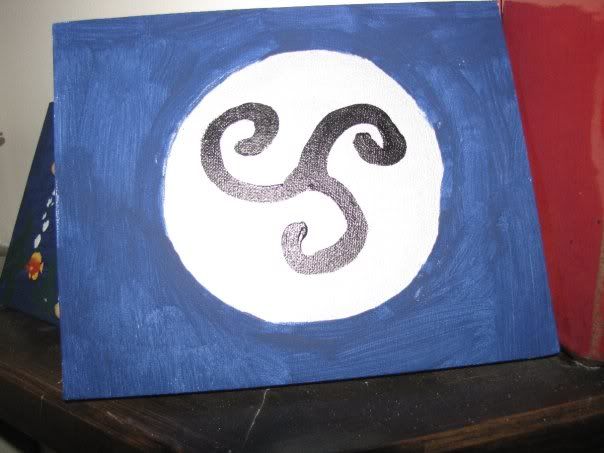 Strabo ultimately concludes, in Book IV, Chapter 5, "Concerning Thule, our historical information is still more uncertain, on account of its outside position; for Thule, of all the countries that are named, is set farthest north."
Strabo ultimately concludes, in Book IV, Chapter 5, "Concerning Thule, our historical information is still more uncertain, on account of its outside position; for Thule, of all the countries that are named, is set farthest north."
Nearly a half century later, in 77, Pliny the Elder published his Natural History in which he also cites Pytheas' claim (in Book II, Chapter 75) that Thule is a six-day sail north of Britain. Then, when discussing the islands around Britain in Book IV, Chapter 16, he writes: "The farthest of all, which are known and spoke of, is Thule; in which there be no nights at all, as we have declared, about mid-summer, namely when the Sun passes through the sign Cancer; and contrariwise no days in mid-winter: and each of these times they suppose, do last six months, all day, or all night." Finally, in refining the island's location, he places it along the most northerly parallel of those he describes, writing in Book VI, Chapter 34,: "Last of all is the Scythian parallel, from the Rhiphean hills into Thule: wherein (as we said) it is day and night continually by turns (for six months)."
The Roman geographer Pomponius Mela placed Thule north of Scythia.
When scientists of the Institute of Geodesy and Geoinformation Science of the Technical University of Berlin were testing the antique maps of Ptolemy, they recognized a pattern of calculation mistakes which occurred if one tried to convert the old coordinates from Ptolemy into modern geographical coordinates. After correcting for the mistakes, the scientists mapped Ptolemy's Thule to the Norwegian island Smøla.
Other late classical writers and post-classical writers such as Orosius (384-420 A.D) and the Irish monk Dicuil (late 8th and early 9th century), describe Thule as being North and West of both Ireland and Britain. Dicuil described Thule as being beyond islands that seem to be the Faroes, strongly suggesting Iceland. In the writings of the historian Procopius, from the first half of the 6th century, Thule is a large island in the north inhabited by twenty-five tribes. It is believed that Procopius is really talking about a part of Scandinavia, since several tribes are easily identified, including the Geats (Gautoi) in present-day Sweden and the Saami (Scrithiphini). He also writes that when the Heruls returned, they passed the Varni and the Danes and then crossed the sea to Thule, where they settled beside the Geats.
Ancient literature
Virgil coined the term Ultima Thule (Georgics, 1. 30) meaning furthest land as a symbolic reference to denote a far-off land or an unattainable goal.
The 1st century BC Greek astronomer Geminus of Rhodes claimed that the name Thule went back to an archaic word for the polar night phenomenon – "the place where the sun goes to rest". Dionysius Periegetes in his De situ habitabilis orbis also touched upon this subject as did Martianus Capella. Avienus in his 'Ora Maritima' added that during the summer on Thule night lasted only two hours, a clear reference to the midnight sun.
Cleomedes referenced Pytheas' journey to Thule, but added no new information.
 A novel in Greek by Antonius Diogenes entitled The Wonders Beyond Thule appeared c. AD 150 or earlier. Gerald N. Sandy, in the introduction to his translation of Photius' ninth-century summary of the work, surmises that Thule was "probably Iceland."
A novel in Greek by Antonius Diogenes entitled The Wonders Beyond Thule appeared c. AD 150 or earlier. Gerald N. Sandy, in the introduction to his translation of Photius' ninth-century summary of the work, surmises that Thule was "probably Iceland."
The Latin grammarian Gaius Julius Solinus in the 3rd century AD, wrote in his Polyhistor that Thule was a 5 days sail from Orkney:
...Ab Orcadibus Thylen usque quinque dierum ac noctium navigatio est; sed Thyle larga et diutina Pomona copiosa est.
...Thyle, which was distant from Orkney by a voyage of five days and nights, was fruitful and abundant in the lasting yield of its crops.
The 4th century Virgilian commentator Servius also believed that Thule sat close to Orkney:
...Thule; insula est Oceani inter septemtrionalem et occidentalem plagam, ultra Britanniam, iuxta Orcades et Hiberniam; in hac Thule cum sol in Cancro est, perpetui dies sine noctibus dicuntur...
...Thule; an island in the Ocean between the northern and western zone, beyond Britain, near Orkney and Ireland; in this Thule, when the sun is in Cancer, it is said that there are perpetual days without nights...
Early in the fifth century AD Claudian, in his poem, On the Fourth Consulship of the Emperor Honorius, Book VIII, rhapsodizes on the conquests of the emperor Theodosius I, declaring that the Orcades ran red with Saxon slaughter; Thule was warm with the blood of Picts; ice-bound Hibernia [Ireland] wept for the heaps of slain Scots." This implies that Thule was Scotland. But in Against Rufinias, the Second Poem, Claudian writes of "Thule lying icebound beneath the pole-star." Jordanes in his Getica also wrote that Thule sat under the pole-star.
Over time the known world came to be viewed as bounded in the east by India and in the west by Thule, as expressed in the Consolation of Philosophy (III, 203 = metrus V, v. 7) by Boethius.
For though the earth, as far as India's shore, tremble before the laws you give, though Thule bow to your service on earth's farthest bounds, yet if thou canst not drive away black cares, if thou canst not put to flight complaints, then is no true power thine.
The Roman historian Tacitus, in his book chronicling the life of his father-in-law, Agricola, describes how the Romans knew that Britain (which Agricola was commander of) was an island. He writes of a Roman ship that circumnavigated Britain, and discovered the Orkney islands and says the ship's crew even sighted Thule. However their orders were not to explore there, as winter was at hand.
Seneca the Younger writes of a day when new lands will be discovered past Thule. This was later quoted widely in the context of Christopher Columbus' discovery of America.
.
"As above, so below"
These words circulate throughout occult and magical circles. They are recorded in Hermetic texts, although they originated in the Vedas.
The actual text of that maxim, as translated by Dennis W. Hauck from The Emerald Tablet of Hermes Trismegistus, is: "That which is Below corresponds to that which is Above, and that which is Above corresponds to that which is Below, to accomplish the miracle of the One Thing." Thus, whatever happens on any level of reality (physical, emotional, or mental) also happens on every other level.
This principle, however, is more often used in the sense of the microcosm and the macrocosm. The microcosm is oneself, and the macrocosm is the universe. The macrocosm is as the microcosm and vice versa; within each lies the other, and through understanding one (usually the microcosm) a man may understand the other.
As above, so below
As within, so without
As in the spiritual, so in the natural
As in heaven, so on earth
.
 Of course, this film was fiction; and it almost had a "fantasy" type of feel to it. To say the least, there was no doubt about who the "good guys" and "bad guys" were. Since the film 'Dances with Wolves', it has been fashionable to portray Amerindians in a positive light, and Europeans in a negative light. It's difficult to do a review and also avoid this paradigm. The movie starts with an Amerindian woman seeing a "white horse" which chases her, and she doesn't know what it is; and that pretty much set the stage. The horse may have appeared like a dragon to the unknowing, and this horse was white. Shortly after, an earlier scene is shown of an earlier Viking invasion where a boy is left behind, and is adopted into "the people of the dawn." Amerindian life is then shown to be very peaceful, based on inter-tribal trade; beyond which the entire movie is non-stop violence as the "dragon men" return.
Of course, this film was fiction; and it almost had a "fantasy" type of feel to it. To say the least, there was no doubt about who the "good guys" and "bad guys" were. Since the film 'Dances with Wolves', it has been fashionable to portray Amerindians in a positive light, and Europeans in a negative light. It's difficult to do a review and also avoid this paradigm. The movie starts with an Amerindian woman seeing a "white horse" which chases her, and she doesn't know what it is; and that pretty much set the stage. The horse may have appeared like a dragon to the unknowing, and this horse was white. Shortly after, an earlier scene is shown of an earlier Viking invasion where a boy is left behind, and is adopted into "the people of the dawn." Amerindian life is then shown to be very peaceful, based on inter-tribal trade; beyond which the entire movie is non-stop violence as the "dragon men" return. The director seems to hold back from displaying cultural Norse/Odinic symbolism; as almost to try to place them more in a general "bad-guy" category. Only the dragon-head on a viking ship early in the movie was shown as a symbol. Even the horned helmets appeared different than what we perceive to be those of the Vikings; with these horns more like Satanic ram horns... sharpened and turned downward to the jawline on either side. I believe that I saw what at least appeared to be some Celtic knotwork on a couple of Viking breastplates, but I'm not certain.
The director seems to hold back from displaying cultural Norse/Odinic symbolism; as almost to try to place them more in a general "bad-guy" category. Only the dragon-head on a viking ship early in the movie was shown as a symbol. Even the horned helmets appeared different than what we perceive to be those of the Vikings; with these horns more like Satanic ram horns... sharpened and turned downward to the jawline on either side. I believe that I saw what at least appeared to be some Celtic knotwork on a couple of Viking breastplates, but I'm not certain.

